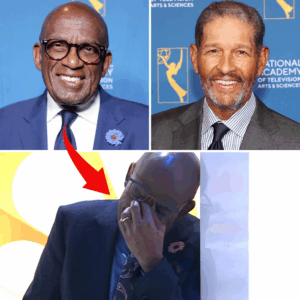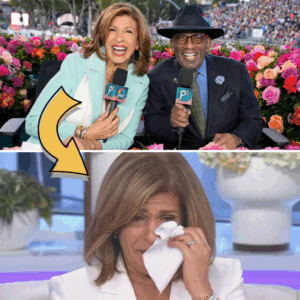At 10:43 AM +07 on Tuesday, July 1, 2025, the legacy of a chilling cinematic adaptation continues to intrigue audiences and critics alike. Scarlett Johansson, the versatile Hollywood icon known for her roles in Lost in Translation and the Marvel Cinematic Universe, lent her talent to The Black Dahlia, a 2006 neo-noir thriller directed by Brian De Palma. This film, based on the infamous unsolved murder of Elizabeth Short in 1947, marks one of Johansson’s forays into true crime cinema, showcasing her ability to navigate complex narratives rooted in real-life horror. Released to mixed reviews but praised for its atmospheric depth, The Black Dahlia remains a notable entry in Johansson’s filmography and a compelling exploration of one of America’s most enduring mysteries. This article delves into the film’s origins, Johansson’s performance, its adaptation of the Black Dahlia case, and its lasting impact.
Film Origins and Release
The Black Dahlia premiered on September 15, 2006, following its debut at the 63rd Venice International Film Festival on August 30, where it was nominated for the Golden Lion. Adapted from James Ellroy’s 1987 novel of the same name, the film was a passion project for De Palma, who secured the rights in 1997 after David Fincher stepped away to direct Zodiac. Principal photography began in April 2005 in Sofia, Bulgaria, with additional shots in Los Angeles, reflecting a budget of approximately $50 million. The movie grossed $49.3 million globally, falling short of expectations but gaining a cult following for its stylized take on a case that has fascinated the public for nearly eight decades.
Plot and Adaptation
The film centers on the brutal murder of Elizabeth Short, a 22-year-old aspiring actress whose mutilated body was discovered on January 15, 1947, in a vacant lot in Los Angeles. Dubbed the “Black Dahlia” due to her dark hair and the macabre nature of her death—her body was severed at the waist, drained of blood, and her face slashed from ear to ear—the case remains unsolved, with over 60 suspects identified but never conclusively linked. Ellroy’s novel weaves a fictional narrative around this real event, focusing on two LAPD detectives, Dwight “Bucky” Bleichert (Josh Hartnett) and Lee Blanchard (Aaron Eckhart), whose investigation unravels their personal lives. Johansson plays Kay Lake, Blanchard’s girlfriend, whose role intertwines with the detectives’ descent into obsession and corruption.
Scarlett Johansson’s Performance
Johansson’s performance as Kay Lake, while not the lead, adds a layer of emotional complexity to the film. At 21, she brought a sultry yet vulnerable edge to the character, a former call girl turned informant who becomes romantically involved with Bleichert after Blanchard’s fixation on the case strains their relationship. Critics noted her chemistry with Hartnett, with Variety praising her “luminous presence” that grounded the film’s darker tones. However, some, like The New York Times, felt her role was underutilized, serving more as a plot device than a fully realized character. Johansson prepared by immersing herself in 1940s Hollywood culture, drawing inspiration from Lauren Bacall’s poised demeanor, which she later cited in a 2006 Entertainment Weekly interview as key to capturing Kay’s resilience.
Creative Liberties and Historical Context
The film’s narrative diverges from historical accuracy, a point of contention among true crime enthusiasts. The real investigation involved hundreds of officers and countless leads, including Short’s rumored ties to the mob and her troubled life in Los Angeles. De Palma’s version introduces fictional subplots, such as the Linscott family—played by Hilary Swank and Fiona Shaw—whose twisted dynamics suggest a cover-up, a departure from the novel’s more grounded approach. This creative liberty, while enhancing the noir aesthetic with Dante Ferretti’s evocative sets and Vilmos Zsigmond’s moody cinematography, drew criticism from Ellroy himself, who called the released cut a “watered-down” version of his vision. De Palma’s initial three-hour cut was trimmed to 121 minutes at the producers’ insistence, losing some fidelity to the source material.
The Real Black Dahlia Case
The Black Dahlia case itself is a tapestry of speculation and tragedy. Short, born in Boston in 1924, moved to California seeking fame, working odd jobs and dating various men. Her final days remain murky, with theories ranging from a jealous lover to a botched abortion linked to Dr. George Hodel, a suspect popularized by his son Steve Hodel’s 2003 book Black Dahlia Avenger. The LAPD’s handling of the case, marked by media leaks and public hysteria, mirrors the film’s depiction of a chaotic investigation, though the movie amplifies this with fictional twists like incestuous undertones in the Linscott family. The lack of closure—Short’s killer was never identified—fuels the film’s unsettling atmosphere, a factor that resonated with audiences despite its mixed 34% Rotten Tomatoes score.
Career Context for Johansson
Johansson’s involvement came at a pivotal moment in her career. Following Lost in Translation (2003) and Match Point (2005), she was establishing herself as a serious actress, moving beyond early roles like The Horse Whisperer (1998). The Black Dahlia offered a chance to explore noir, a genre she admired, as she told Premiere in 2006: “I love the idea of playing someone caught in a web of lies and danger.” Her casting alongside Hartnett and Eckhart, with Swank adding star power, was a strategic move by Universal Pictures to leverage her rising profile. However, the film’s commercial underperformance—earning $22.5 million domestically against its budget—shifted focus to her subsequent successes, including The Prestige (2006) and her Marvel debut in Iron Man 2 (2010).
Production Challenges
The production faced challenges that shaped its final form. De Palma replaced Mark Wahlberg with Eckhart just before shooting, and Maggie Gyllenhaal declined the role of Short due to discomfort with the character’s exploitation, leading to Mia Kirshner’s casting in limited but haunting screen time. Johansson’s role, originally considered for Gwen Stefani and others, was tailored to her after initial auditions, reflecting De Palma’s vision of a classic femme fatale archetype. The use of Sofia as a stand-in for 1940s Los Angeles, due to cost savings, added a surreal quality, though some critics, like The Guardian, found it jarring against the period authenticity.
Cultural Impact and Reception
The Black Dahlia’s cultural impact lies in its attempt to reframe a historical enigma. The case’s media frenzy—over 60 people confessed, and thousands of tips flooded the LAPD—parallels the film’s portrayal of a city obsessed with scandal. Johansson’s Kay Lake, though fictional, embodies the era’s women caught in male-driven narratives, a theme echoed in posts found on X praising her “underrated noir vibe.” The film’s DVD release on December 26, 2006, and Blu-ray on September 7, 2010, kept it alive for home viewers, though its theatrical reception was lukewarm, with Box Office Mojo noting its second-place debut behind Gridiron Gang.
Critical Perspectives
Critics remain divided. Rolling Stone lauded its “visual poetry,” while The Los Angeles Times criticized its convoluted plot, a sentiment shared by Ellroy, who preferred his rough cut. The film’s terror stems from its fidelity to the case’s unresolved nature, leaving viewers to ponder Short’s fate—did a doctor, a gangster, or an unknown killer strike? Johansson’s performance, though secondary, adds a human anchor, her expressive eyes hinting at Kay’s inner turmoil.
Conclusion
As of 2025, The Black Dahlia endures as a polarizing classic, its terror amplified by its real-life roots. Johansson’s contribution, while not her most celebrated, showcases her versatility, bridging her early promise with future stardom. The film invites reflection on how cinema handles true crime, balancing entertainment with the weight of history, ensuring the Black Dahlia’s story remains a haunting whisper in American culture.




